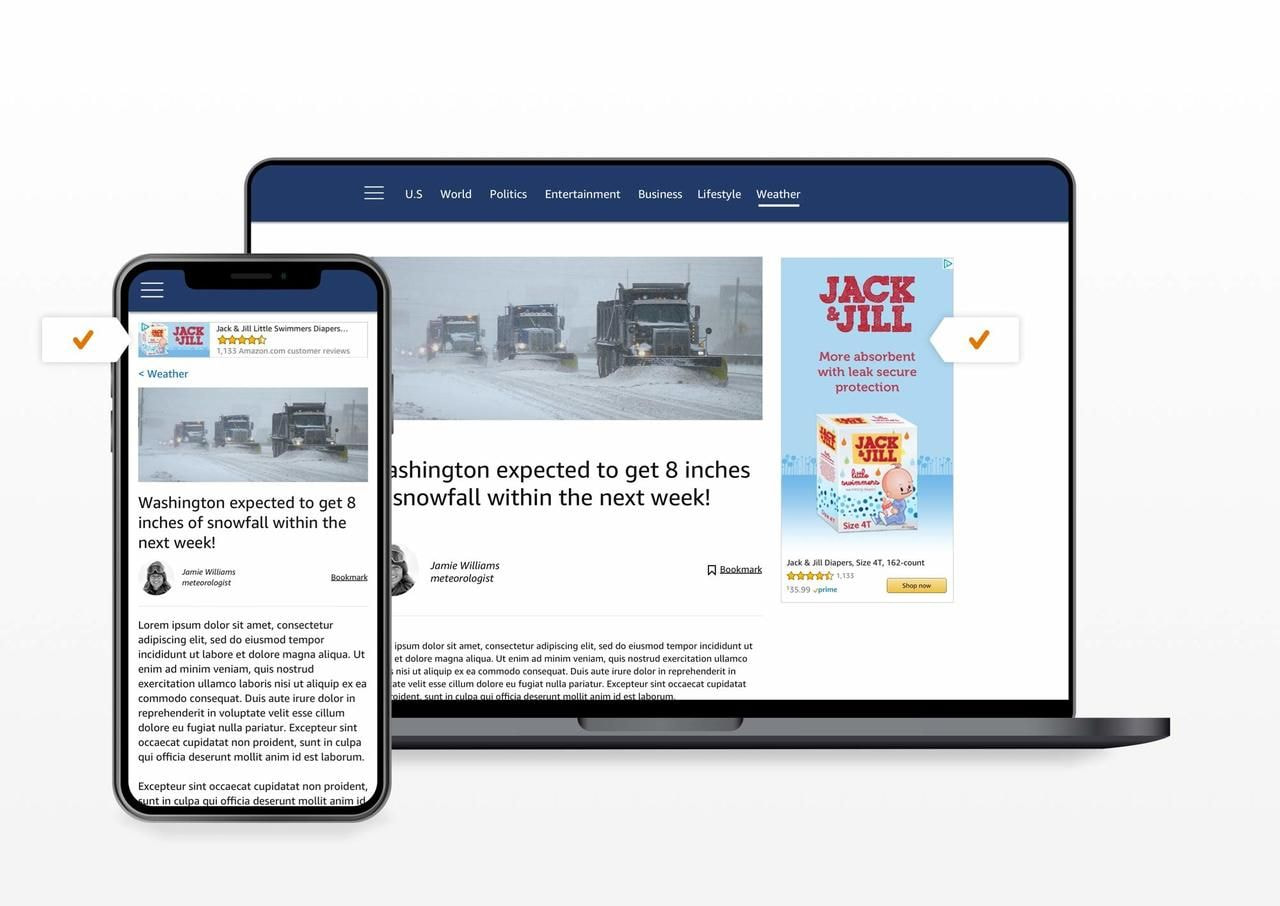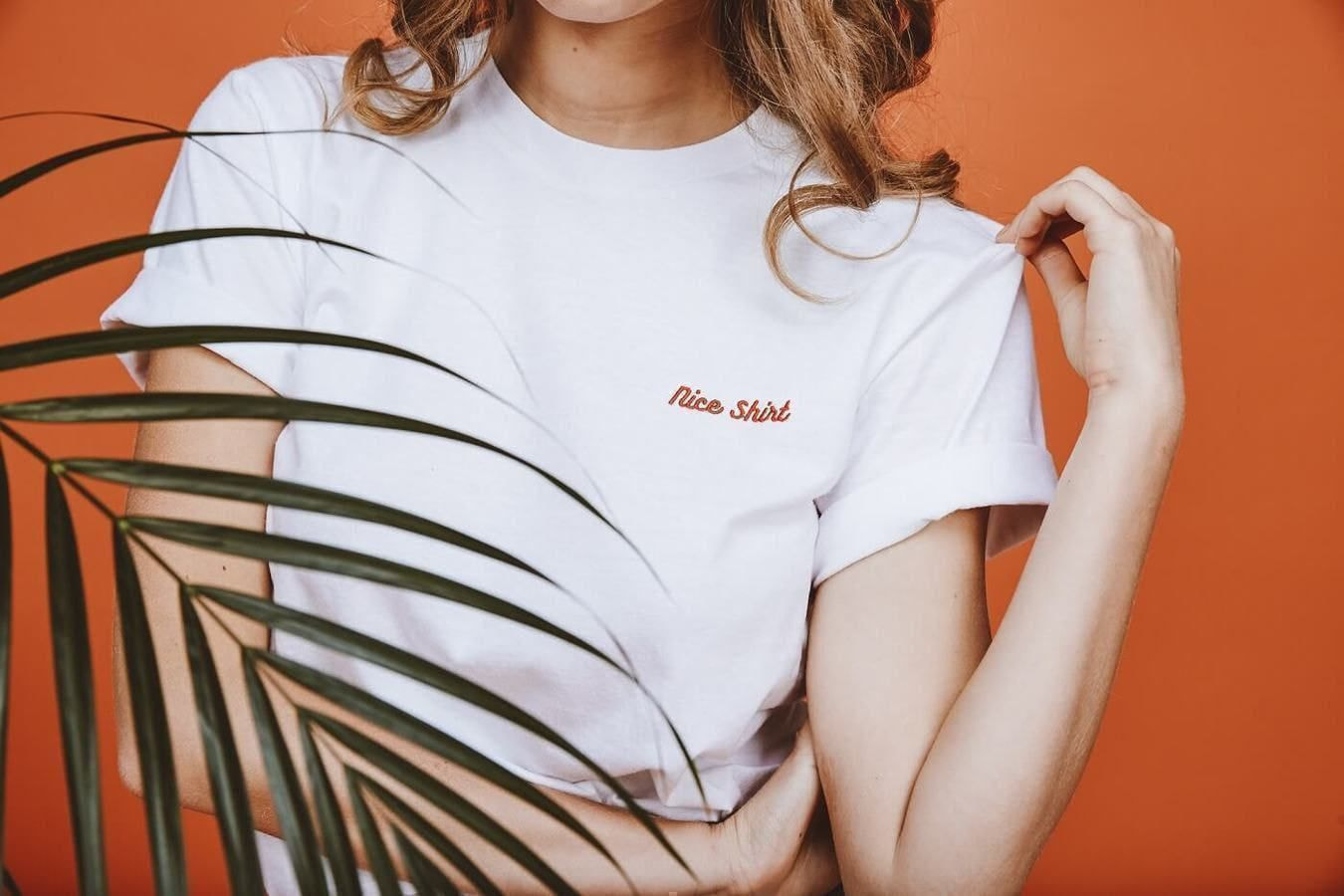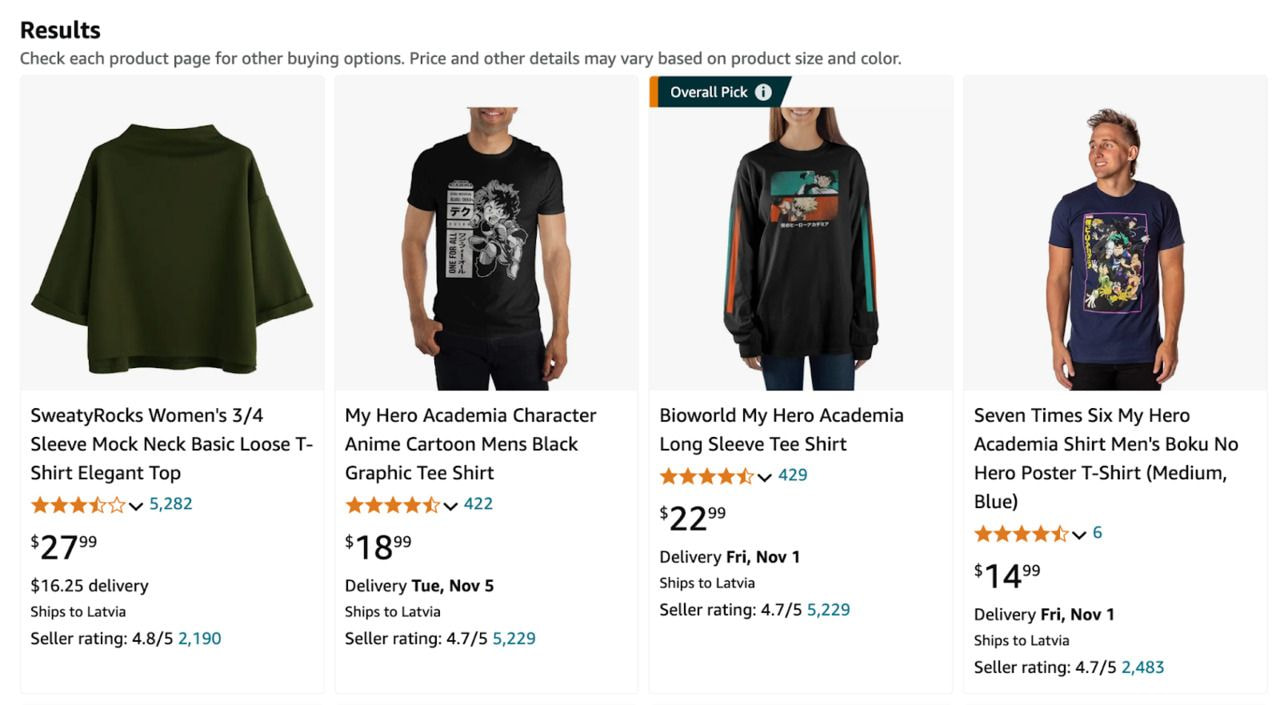Table of contents
Learning how to sell t-shirts on Amazon can unlock real, scalable income—even if you’re starting from scratch.
The best part? You don’t need inventory or a full-fledged online store. With the right tools and a strong lineup of custom t-shirts, start selling shirts on Amazon quickly and grow with confidence.
This guide will walk you through every step—from setting up your seller account to creating eye-catching t-shirt designs and optimizing your listings for visibility and sales.
Let’s look at how to start a clothing brand and sell shirts on Amazon.
1. Open an Amazon store
To launch your t-shirt business on Amazon, you’ll first need to set up a storefront. Start by creating an Amazon seller account and choosing the selling plan that best fits your needs.
-
Individual plan: $0.99 per item sold. Great for small businesses and beginners selling <40 products a month.
-
Professional plan: $39.99 a month. Perfect for sellers moving high volume (40+ items monthly) and looking to access advertising and advanced selling tools.
There is an exception where you don’t have to pay for the selling plan (by selling with Amazon Merch on Demand). We’ll get to that later.
Once you’ve set up your seller account, move on to the next step.
Have questions? Request seller onboarding support directly from Amazon.
2. Pick a t-shirt fulfillment provider
The next step in how to sell custom t-shirts on Amazon is choosing how your products will be sourced and delivered. To run a successful Amazon t-shirt business, you’ll need inventory and a reliable t-shirt printing partner.
The good news? You don’t have to handle production or shipping yourself. There are several fulfillment options available—these three are the most popular among Amazon sellers looking to streamline their custom t-shirt operations.
Printful

Source: Printful
Printful is a print-on-demand company that supplies online sellers with custom clothing, including custom polos, t-shirts, sweatshirts, hoodies, and more. Have your designs either printed or embroidered. Once a customer places an order, Printful’s global network of facilities will do the rest without you needing to lift a finger.
Because Printful operates on-demand, there’s no need to manage inventory or invest upfront. You only pay when a shirt sells, making it a cost-effective fulfillment method for launching or scaling your Amazon t-shirt business.
Here’s how to connect Printful to your Amazon seller account:
-
Sign up for Printful
-
Go to your Printful Dashboard > Start selling > Stores > Choose platform > Amazon
-
Follow the prompts to connect your Amazon seller account
-
Accept the Amazon Marketplace Developer Agreement and set up API access
-
Apply for a GTIN exemption from Amazon – this is required if your product doesn’t have a UPC or other unique identifier. Learn how to request a GTIN exemption.
-
Once everything’s connected, publish your shirts directly from Printful to your Amazon listings
Printful will handle production, packaging, and delivery—so you can focus on creating, marketing, and growing your Amazon t-shirt store.
If you’re a more visual learner, watch this video instead:




Amazon Merch on Demand

Source: Amazon
Amazon offers 2 fulfillment options, the first is Merch on Demand. Here’s how it works:
-
Upload your artwork
-
Set a listing price
-
Amazon sells, prints, packs, and ships products
-
You earn royalties on every product sold
To get started, submit business registration, tax, and bank account information, then wait for Amazon’s approval.

Source: Amazon
Once Amazon reviews your request, start uploading your designs, working on your listing descriptions, and setting prices. Your royalties will vary depending on the listing price you’ve set, as well as the production costs, sales tax, and shipping expenses.
With Amazon Merch on Demand, you don’t have to choose a selling plan—Amazon sells the t-shirts for you under its own brand. While this option is the most affordable, it also gives you the least control over your products. You won't have your own storefront, the ability to advertise, or direct interaction with your customers.
Fulfillment by Amazon (FBA)
Source: Amazon
Fulfillment by Amazon (FBA) works differently from Merch on Demand. With FBA, you send your t-shirts and other products to Amazon, and they handle inventory, packing your orders, and shipping directly to your customers.
This fulfillment option comes with fulfillment and storage fees, which depend on item size and inventory volume—check Amazon’s website for exact pricing.
One major perk of FBA is access to Amazon’s advanced inventory management system. Your stock is automatically tracked and updated, helping you avoid overselling or running out of popular sizes and styles.
3. Design your t-shirt
Now comes the fun part—getting creative! Your niche is your best source of inspiration for t-shirt design ideas. Create motivational t-shirts for fellow fitness enthusiasts. Obsessed with houseplants? Design tees for proud plant parents.
Whatever you’re passionate about, turn it into t-shirt art using our Design Maker.

Create designs with:
-
Motivational quotes
-
Inside jokes and niche-related puns
-
Animal-themed designs
-
Photo collages
-
Vintage visuals (from Art Deco to Disco)
-
Holiday-edition designs
In short—there’s A LOT. If you’re still unsure about your t-shirt, here’s our list of great t-shirt design ideas for inspiration.
Learn more:
Once your t-shirt design is done, list it on your Amazon store. Now, let's explore how to make sure it gets the attention it deserves.
4. Set the right pricing
Pricing your future best-selling designs correctly is key to sustaining your business. Price too high, and your target customer will scroll past. Price too low, and you risk losing money or damaging your credibility.
Start by calculating your total costs, including:
-
Production (t-shirt printing, materials)
-
Fulfillment (shipping, packaging, handling)
-
Monthly subscription fee (based on your seller plan and referral percentages)
If you're using a print-on-demand model, factor in those fulfillment costs and compare them to the pricing of similar products.
Source: Amazon
To price competitively (and smartly):
-
Research similar shirts on Amazon and note common price ranges
-
Track what top listings are doing right—this could include their list price, product titles, or promotional strategies
Use tools like SellerApp to dig into niche trends, demand, and pricing insights
Source: sellerapp
Also, don't forget to make room for:
-
Future promotions (bundles, free shipping)
-
Occasional discounts to boost visibility or test new designs
-
Marketplace changes like shifts in demand or rising material costs
And don’t just set it and forget it—review your prices regularly to make sure you’re staying profitable and relevant. Plus, don't stop at tees; add sweatshirts, hoodies, and other goodies.
Read more: How to Price Custom Shirts
5. Get noticed on Amazon
Amazon’s market is huge, making it easy to get lost in the crowd. That’s why taking a strategic approach is important to stand out to your ideal customer base. Let’s explore the details.
Do some Amazon SEO
Let’s say you’re a shopper looking to purchase a t-shirt that shows off your love for books. You type “book t-shirt” into the search bar and hit enter. Instantly, you’re flooded with thousands of listings.

You’ll probably compare a few top-ranking shirts—but you’re not scrolling through every single one. That’s why optimizing your listings is essential for appearing early in search results.
This is where Amazon SEO makes all the difference. It’s a set of tactics designed to improve your visibility and get your products in front of more buyers.
To improve your rankings:
-
Use relevant keywords naturally throughout your listing
-
Craft a strong product title that includes important search terms
-
Fill out every section of your listing with helpful details—from fabric type to fit
-
Optimize your bullet points and descriptions to match what your ideal customer is searching for
Higher visibility = more views, more clicks, and more potential sales. If you're ready to dive deeper here’s a full guide on Amazon SEO to get you started.
Add compelling product photos
Enhance your customers’ shopping experience by uploading high-quality product images. This makes it easier for them to find what they need and ensures they’re satisfied with their purchase.
To catch the eye of your Amazon customers, make sure your t-shirt photos are:
-
High-quality (clear, well-lit, not pixelated)
-
Compliant with Amazon’s guidelines (white backgrounds, no additional text, no drawings/illustrations)
Showcasing your t-shirt in all its glory (design close-ups, additional details, and lifestyle photos)
Promote your t-shirt listings
Once you set up your account, you’ll have access to Amazon Seller Central—an interface designed for merchants. There, you’ll find three tools to help boost your listings: Sponsored Products, Sponsored Display, and Sponsored Brands.
These tools fall under the broader umbrella of Amazon advertising, a powerful way to increase product visibility and drive targeted traffic to your listings.
Sponsored Products are product listing ads. With Sponsored Products, your Amazon products can appear on page 1 of search results, on the first page of product category pages, and as related products.

Sponsored Display is similar to the previous promo option, but it’s more customizable. It also places the product ad not only on the Amazon marketplace but across other sites on the web as well.

When clicked, this ad will lead them straight to your listing.
Sponsored Brands is a cost-per-click type of promotion. These ads appear as banners above Amazon search results.

You can add your logo, a custom headline, and multiple products to your banner.
Read more: 8 Effective T-Shirt Ads (And Why They Work)
Create buzz with social media marketing
Social media is one of the best ways to boost sales and visibility for your t-shirt brand. Whether you're launching a new design or promoting a best-seller, platforms like Instagram, TikTok, and Pinterest can generate buzz and drive traffic straight to your Amazon listings.
But here's the thing—successful social media marketing isn’t a one-size-fits-all approach. Each platform has its own tone, audience, and expectations. What works on TikTok may flop on LinkedIn, so tailor your content to fit each platform’s unique vibe and focus on engagement, not just exposure.
To build real momentum on your quest on how to make money selling t-shirts on Amazon, treat social media as an extension of your sales funnel:
-
Share behind-the-scenes content
-
Highlight reviews and photos to build trust and boost customer satisfaction
-
Run giveaways, polls, or countdowns to create urgency
-
Use trending audio and hashtags to increase reach
-
Link directly to your Amazon product listings to streamline the purchase process
Lastly, check your accounts daily. Respond to comments and DMs, and keep the conversation going. A responsive, trustworthy brand is more likely to convert followers into buyers.

Learn the ins and outs of social media marketing in our guides:
How to design and sell t-shirts on Amazon: Conclusion
Can you make money selling t-shirts on Amazon? Absolutely. But it’s not overnight. Sometimes, it takes a day, sometimes a month, and sometimes a dozen shirt designs before you see your first sale.
If you’ve tried everything and your tees still aren’t selling, don’t throw in the towel. Try this instead:
-
Rework your pricing strategy to stay competitive
-
Refresh your t-shirt designs based on current trends
-
Optimize your listings and double-check your SEO
-
Focus on your niche and build a recognizable brand
Most importantly, make the process easier for yourself.
Printful handles production, fulfillment, and shipping, so you can focus on what drives sales: design, marketing, and building your audience. No inventory, no upfront costs, no guesswork—just one reliable partner that plugs straight into your Amazon store.
Stick with it, keep experimenting, and when you hit your first milestone, come back and let us know in the comments—we’re rooting for you.
Read next:


Frequently asked questions
1. Create an Amazon seller account
2. Choose a print-on-demand service like Printful or Amazon Merch on Demand
3. Create your designs
4. Prepare compelling product photos and SEO-optimized descriptions
4. Publish listings on Amazon
5. Promote your listings and make sales
Merch by Amazon, now Amazon Merch on Demand, is free and requires no upfront payment. It’s a print-on-demand service that lets you upload your merch designs to Amazon and earn royalties when someone buys them.
Yes, Canva provides all the necessary tools to create high-quality t-shirt designs. You can set the right resolution and file size and set the file format required by your print-on-demand service.
All quotes are copyrighted, and you can’t use them for commercial purposes unless you have written permission from the copyright owner. This may not apply if the sentence is short or generic, but it’s always best to consult a legal professional.
1. Research keywords and use SEO to enhance your listings
2. Take compelling product photos and videos
3. Use paid ads
4. Create buzz on social media channels relevant to your audience
5. Share your designs in online communities
Yes, selling t-shirts on Amazon can be profitable if done right. Success in selling t-shirts online often relies on creating unique t-shirt designs, optimizing your product listings, and targeting specific niches. While the competition is high, the platform’s vast audience offers great potential.
Focus on competitive pricing, marketing, and using SEO to improve visibility.
The cost to sell shirts on Amazon varies based on your chosen selling plan. The Individual plan costs $0.99 per product sold, while the Professional plan is $39.99 per month.
Additional costs include referral fees and fulfillment expenses. If you use Amazon Merch on Demand, you avoid upfront inventory costs. However, the selling price and production fees will impact your earnings. Pricing varies depending on the fulfillment method and t-shirt printing provider.
Amazon doesn’t require you to have a specific license, but your state laws might. You also need to comply with Amazon’s seller policies and local business regulations for your t-shirt business.
Selling branded or trademarked items also may require special permissions, but most sellers can start their own businesses without issues. Make sure you register your business model properly and meet any legal requirements in your region.
Yes, you can make money selling t-shirts, sweatshirts, and other apparel on Amazon by creating high-quality designs and targeting a specific niche. To increase sales, optimize your Amazon listings with relevant keywords and run Sponsored Products ads.

Una’s a Senior SEO Content Writer with a knack for SEO-friendly copywriting and building stunning landing pages. In her spare time, she's an avid reader and keeps close tabs on all things social media and mental health.








